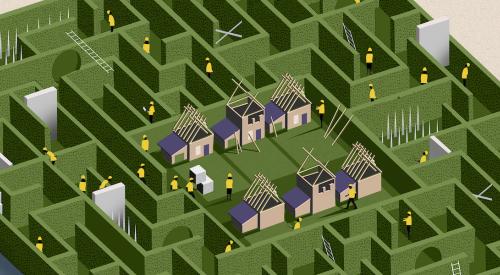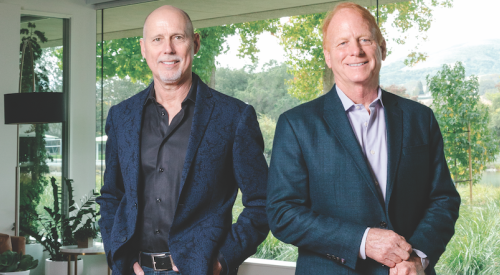| Dean Horowitz, Publisher |
Remember singing Woody Guthrie's "This Land Is Your Land" as a kid and feeling the pride of citizenship? We all share our nation's landscape - unless someone wants to develop the land next to your land. Then sharing can be a problem.
Here's a story that is close to home. My neighbors recently learned about a proposed development that would transform the farmland next to our 13-home community. On the three other sides our development faces a forest preserve, another development and a county road. Our neighborhood is composed of people who either run their own companies or manage departments for larger corporations. They are driven professionals who enjoy a quiet neighborhood and its benefits. While as a group we believe development is good for our town, no one wanted one of the key reasons for purchasing our homes to be destroyed.
The proposed development involves property that has been owned by a local family for generations and, if developed, would still house one of the family members. The family wants its name associated with the new community as a legacy to generational pride. A few neighbors are friends with the owners. To ensure they do the right thing in their development, the owners have committed to keeping all the meaningful trees, introduced state-of-the-art drainage systems and purchased higher-quality, wetland banked property.
The problems that followed the development plan likely sound familiar: a lack of communication, attorneys who underestimated a small community’s relevance, and a land-plan decision that could have blown the whole deal and the reputation of the developer’s team.
First, the communication issue. With only a few days' notice, only the two houses within 250 feet of the proposed development were informed of a planning meeting. While this is established protocol, it was the first sign to the surrounding neighborhoods that trust would not be part of this relationship. They found it "deceitful." A door-to-door campaign, coffee with the neighbors or a progress newsletter would have helped ensure a smooth process.
Problem No. 2 flowed into "the curb-cut controversy." While the developer's lawyers placated the other, larger neighborhoods, they took an aggressive position against my community by stating that our street would be the sole access point for the new community. They blamed the county for not wanting additional curb cuts on an already busy road.
My neighbors took the issue to the county, only to learn it had no problem with the curb cut if it enhanced safety in the area. We learned that the developer team didn’t want the curb cut because it would mean losing a valuable lot. Upon the discovery of this information, not only was trust gone, but now we had a potential uprising.
So our little community formed alliances with the surrounding neighborhoods to ensure that its two major issues were achieved: 1) a separate entrance/curb cut and 2) a bike path to link the neighborhoods.
We put together PowerPoint presentations and had matching neighborhood shirts. Our neighbors are reasonable, but without communication and trust, the fight was getting nasty. The mood turned anti-development. Sides unfortunately were drawn.
This is not unlike what you go through regularly, and I have been in enough of these meetings to not be surprised by the events that occurred. But when it is your family and your neighborhood relationships, you are in the middle of serious emotions. Although people know I work in the residential construction industry, my insights had no significance when trust among the landholders didn't exist.
As of today, a microcosm of the world's issues is unfolding outside my front door. What is forgotten - but hopefully not lost - is the interconnectively of people and their land.












